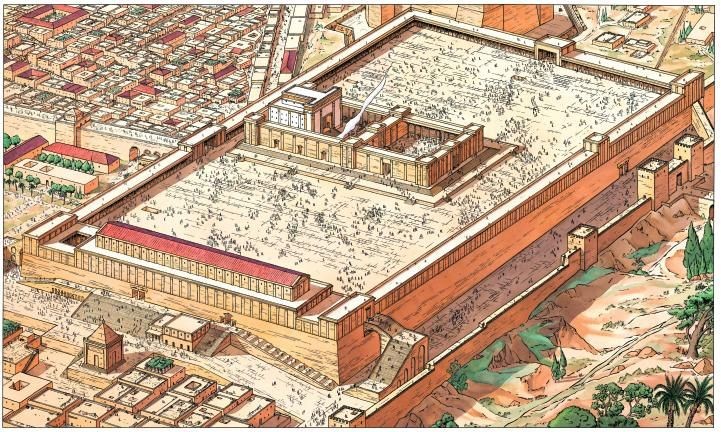PART III: Some History of Zion, Jerusalem’s Temple Mount, and Jerusalem’s Church of the Holy Sepulchre
ANCIENT HISTORY: 1750 BCE to David [999 BCE]:
By the end of MBIIA [1750 BCE], Palestine and southern Syria had been irrevocably drawn into the ambit of the warring Amorite states of the north and east, and hence obliged to adopt a more hostile stance toward Egypt. The Hyksos were a Semitic people who gained a foothold in Egypt c. 1782 BCE at the city of Avaris in Lower Egypt, thus initiating the era known in Egyptian history as the Second Intermediate Period [c. 1782-c. 1570 BCE]. Their name, Heqau-khasut, translates as “Rulers of Foreign Lands”–given by the Greeks as Hyksos–suggesting to some scholars that they were kings or nobility driven from their homes by invasion who found refuge in the port city of Avaris and managed to establish a strong power base during the decline of the 13th Dynasty of the Middle Kingdom [2040-1782 BCE].
The main source of information on the Hyksos in Egypt comes from the 3rd century BCE Egyptian writer Manetho whose work has been lost but was extensively quoted by later writers, notably Roman Flavius Josephus [37- c. 100 CE]. Manetho’s flawed understanding of the meaning of the Hyksos’ name, and Josephus’ further misinterpretation gives the translation of “Hyksos” as “captive shepherds,” which was a complete misunderstanding and has given rise in recent years to the claim that the Hyksos were a Hebrew community living in Egypt whose expulsion provides the basis for the events recorded in the Book of Exodus, including the parting of the Red Sea.
There is no evidence—however–to support this claim. No Egyptian, nor any other culture’s, records indicate that the Hyksos were slaves in Egypt; and there is absolutely no indication they were Hebrew, only that they spoke and wrote a Semitic language. The ethnic origins of the Hyksos are unknown as is their fate once they were driven from Egypt by Ahmose I of Thebes [c. 1570-1544 BCE] who initiated the era of the New Kingdom of Egypt [c. 1570-1069 BCE]. The Hyksos rulers founded the 15th Dynasty of Egypt; but after they were expelled, all traces of the Hyksos in Egypt were erased by the conquering Thebans.
For information regarding the biblical exodus, see Exodus Evidence: An Egyptologist Looks at Biblical History from the May/June, 2016 issue of Biblical Archaeology Review which wrestles with both of these questions: “Did the Exodus happen?” and “When did the Exodus happen?”
After the Sea Peoples stormed the Levant around 1200 BCE–a catastrophe which is still not clear in many of its details–all traditions were extinguished for a considerable period of time. For information about Palestine, students of the era are thrown back almost exclusively on the historical books of the Old Testament, which provide only incomplete information on the newly immigrated Israelite tribes and their more cultured opponents in the land. Along the southern coast–from Gaza to Mount Carmel–enclaves of the Philistines and Teukrians—by then partly Semitized–maintained a firm hold of the broad coastal plains; and, as the Egyptians had done before them, exercised a tentative but preemptive influence over the inland mountains.
In response to the Philistine presence, Israel and Judah in the uplands were moving toward the creation of a state. That progress is named the Canaanite and Israelite Periods of 3200-332 BCE. The Hebrew-Philistine rivalry for the possession of the land provided the occasion for the creation of the Hebrew monarchy. Saul’s anointment [c. 1020 BCE] as the first king was tantamount to a challenge to Philistine suzerainty, but the real founder of the monarchy was David [c. 1004-960 BCE]. In 999 BCE, Jerusalem–a mountain stronghold of the Jebusites–was conquered, and David relocated his capital there — possibly to avoid internecine tribal squabbles based on city-state politics in the more previous capitals.
He established Judean cities, and because Jerusalem is more ideally situated geographically to rule over an extended kingdom. David inaugurated a series of campaigns which lifted the Philistine yoke from Hebrew necks, brought Edom, Moab and Ammon under his rule and what is more amazing, netted him Aramaean Hollow Syria [Aram]. His conquest of Edom brought under his control the great trade route between Syria and Arabia.


